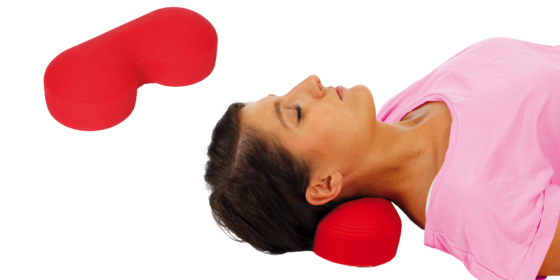Neck tension is a common problem that affects many people. They are often the result of long hours in front of the computer or poor posture. But stress and psychological strain can also lead to tension. In this article we will look at what to do about neck tension and how to relieve it.
What are the causes of neck tension?
There are various causes of neck tension. They are often caused by incorrect posture or movement patterns, such as an unhealthy sitting position at work or a poor sleeping position. Psychological stress such as stress or anxiety can also lead to tension in the neck. In addition, injuries, overuse and diseases of the musculoskeletal system or the nervous system can also lead to neck tension. In some cases, improperly used aids such as pillows or shoulder bags can also be the cause. It is important to identify the cause of neck tension so that effective measures can be taken to alleviate the discomfort.
What are the symptoms of neck tension?
When it comes to neck tension, there are several symptoms that can indicate tension. Typically, a stiff neck or nape occurs, accompanied by pain in the neck and shoulder area and hardened muscles. Headaches may also occur. In some cases, there may be numbness or tingling in the arms and hands.
How can you recognize neck tension? One way is to pay attention to your posture. If you can’t move your neck freely or feel pain in the neck area, this can be an indication of neck tension. It’s also important to pay attention to other symptoms, such as headaches or numbness, that may indicate neck tension.
It is important to recognize symptoms of neck tension early so that appropriate measures can be taken to relieve the symptoms. Neck tension can be relieved through targeted exercises, relaxation techniques and pain management.
How to release tension in the neck muscles?
There are many tips and tricks to relieve neck tension. Here are some effective methods you can try:
Relaxation techniques can help relax the body and relieve stress. There are many different techniques, such as progressive muscle relaxation or yoga, that can help relieve neck tension.
Heat and cold therapy can also be very effective. A hot water bottle or warm bath can help relax muscles and relieve pain. Cold applications, such as ice packs or cool compresses, can also help reduce pain and inflammation.
Massage or self-massage can also help loosen the tight muscles in the neck. A massage by a professional masseur or a massage with a massager can help loosen the muscles and promote blood circulation. Self-massage can also be a quick and effective way to relieve tension in the neck.
Neck exercises and stretches are another way to relieve neck tension. Here are some effective exercises you can try:
- Shoulder circles: Stand or sit upright and let your shoulders hang loosely. Now slowly raise your shoulders and then pull them back and down in a circular motion. Perform this movement 10-15 times.
- Neck rotation: Sit or stand upright and slowly turn your head to the left and then to the right. Hold the position for 10 seconds at a time and repeat the movement 10-15 times.
- Shoulder blade stretching: Place your hands on your shoulders from the side and slowly bring your elbows together in front while pulling your shoulders back. Hold the position for 10 seconds and repeat the movement 10-15 times.
- Stretching the trapezius muscle: Place one hand on the head and slowly pull the head to the side while letting the other hand hang down by the side. Hold the position for 10-15 seconds and repeat the movement on the other side.
By using these methods regularly, you can relieve neck tension and reduce pain in the neck and shoulder area.
Exercises with equipment to relieve neck tension
There are several devices that can help relieve neck tension. Here are some examples:
- Fascia roller: A fascia roller can help relieve tension in the neck area. Lie on your back and place a fascia roller under your neck. Slowly roll from side to side to loosen muscles and release tension.
- Neck massager: there are several types of neck massagers that can help relieve tension in the neck and shoulder area. These can be easily used at home or in the office and are a quick and effective way to relieve tension.
- Fitness bands: A fitness band is an elastic band that can be used for various stretching and strengthening exercises. One fitness band exercise for the neck is to hold the band behind the head and slowly stretch the arms forward while pulling the neck back.
- Brasil: Some specific strengthening exercises for the neck and shoulder area can also be done with the TOGU Brasil. For example, you can do shoulder lifts or reverse flys.
It is important to ensure that exercises are performed correctly when using equipment to avoid injury. If you are unsure, seek advice from a trainer or physiotherapist.
Here’s what you can do to prevent neck pain
A simple tip to prevent neck tension is to stretch and move regularly. It is important to take regular breaks to stretch and move. An easy way to prevent neck tension is to regularly turn your head and roll your shoulders. This can help promote circulation and relax the muscles. Small exercises like shoulder circles or neck rotations can also help relieve tension and give the neck more mobility. These simple measures can prevent neck tension and reduce discomfort in the neck and shoulder area.
These products from TOGU might interest you:

